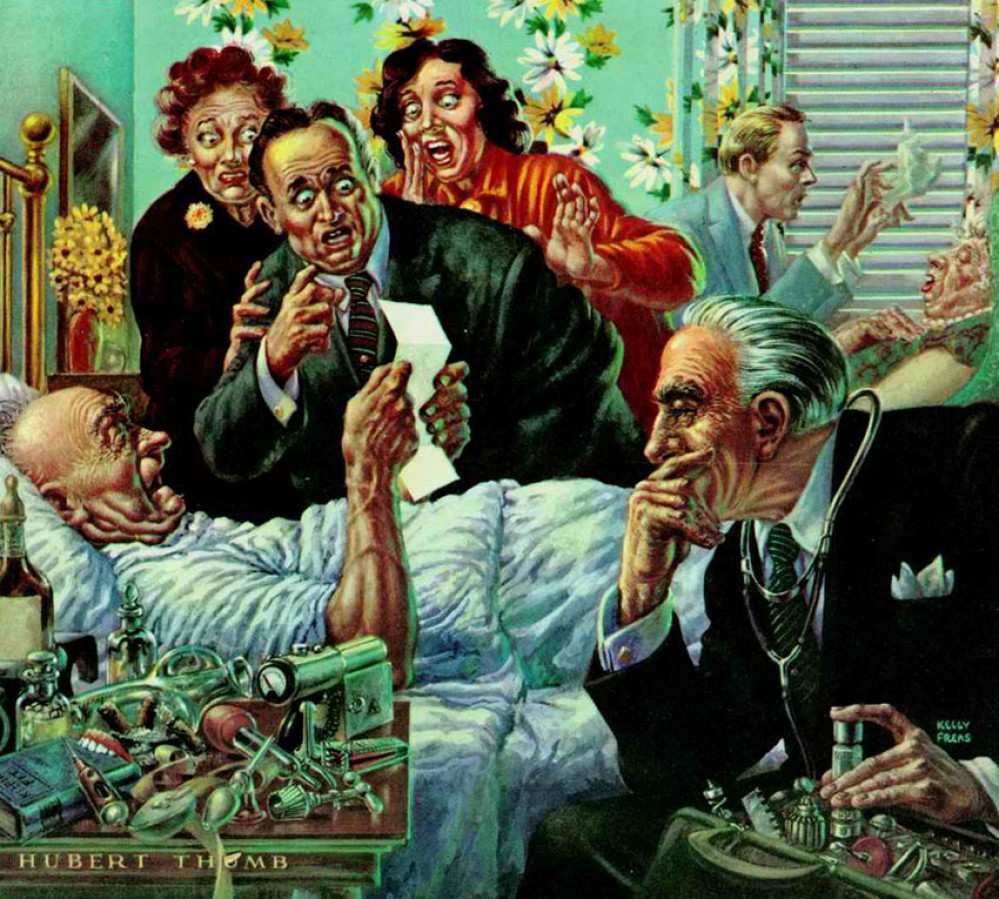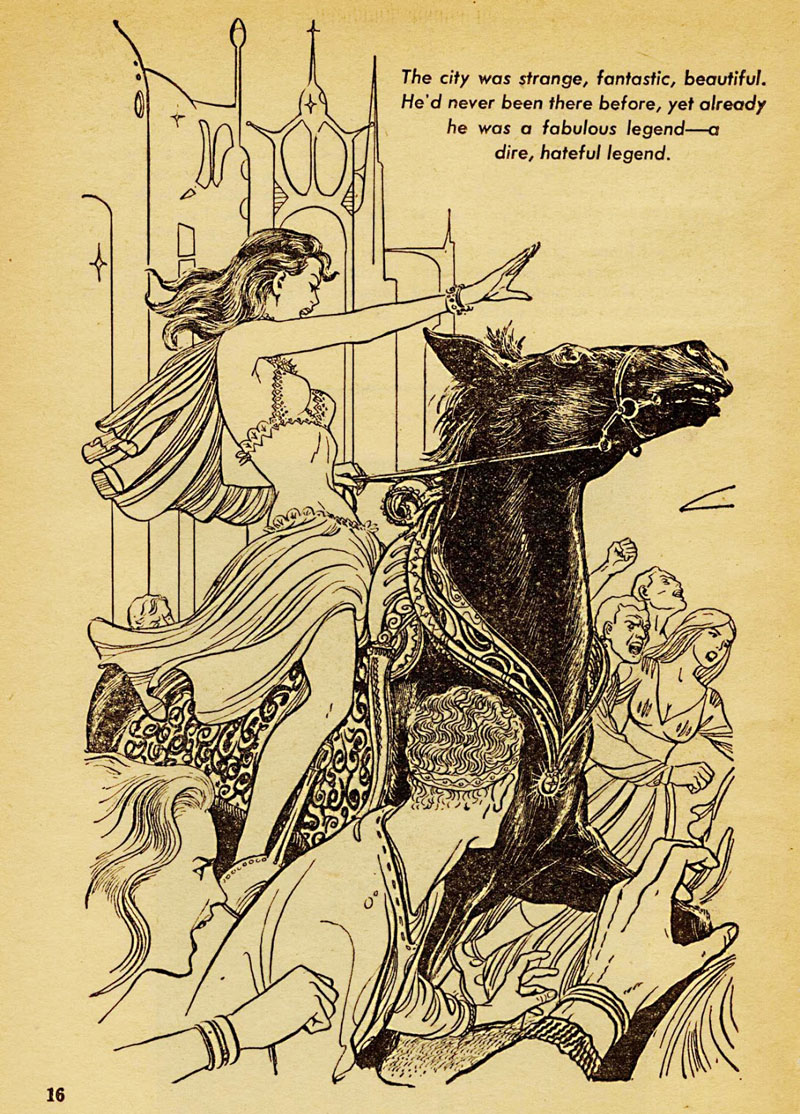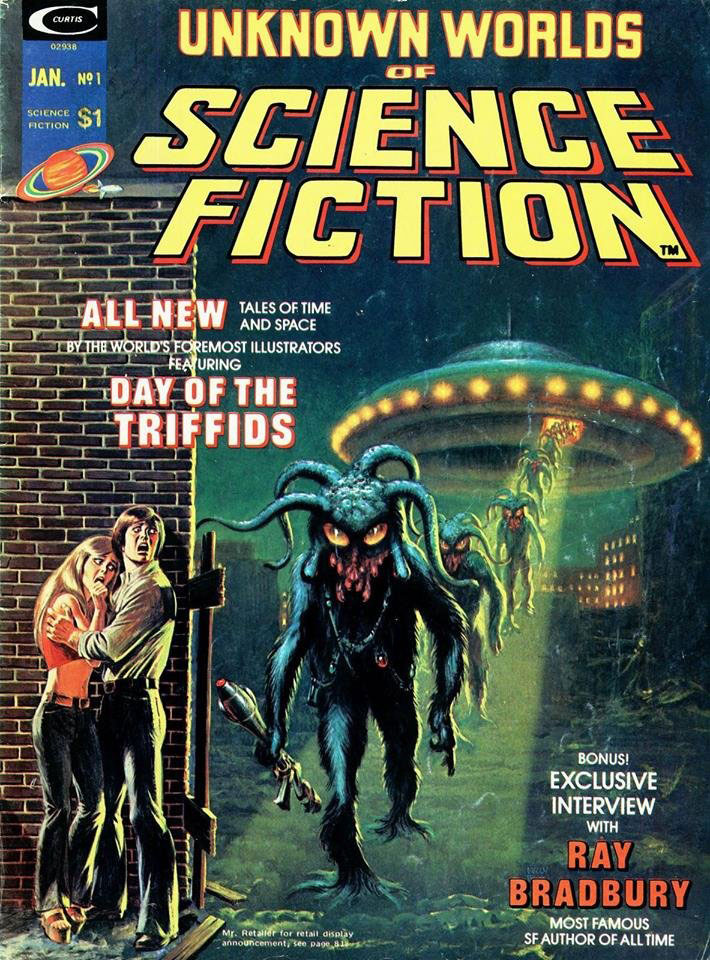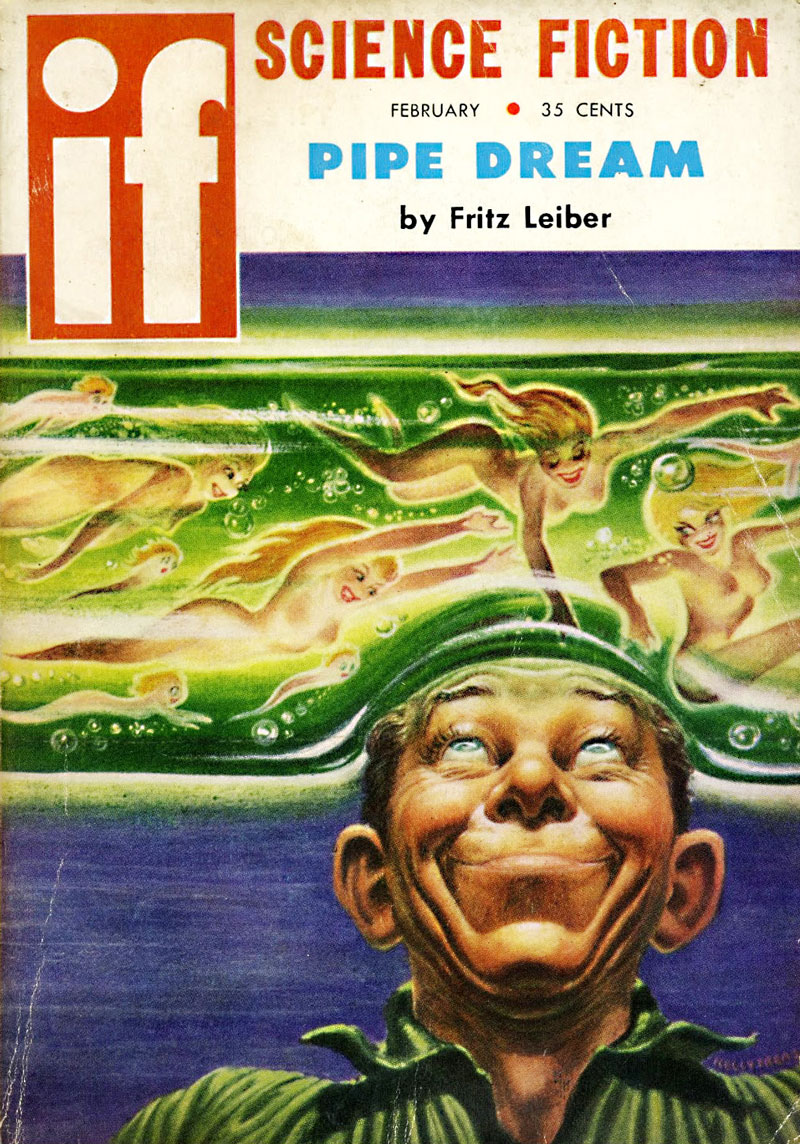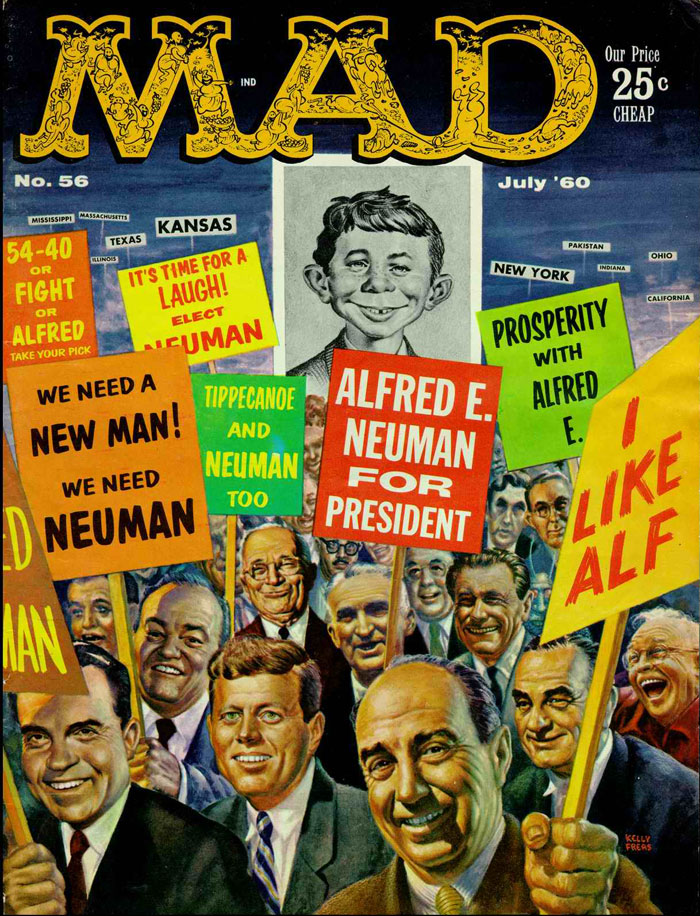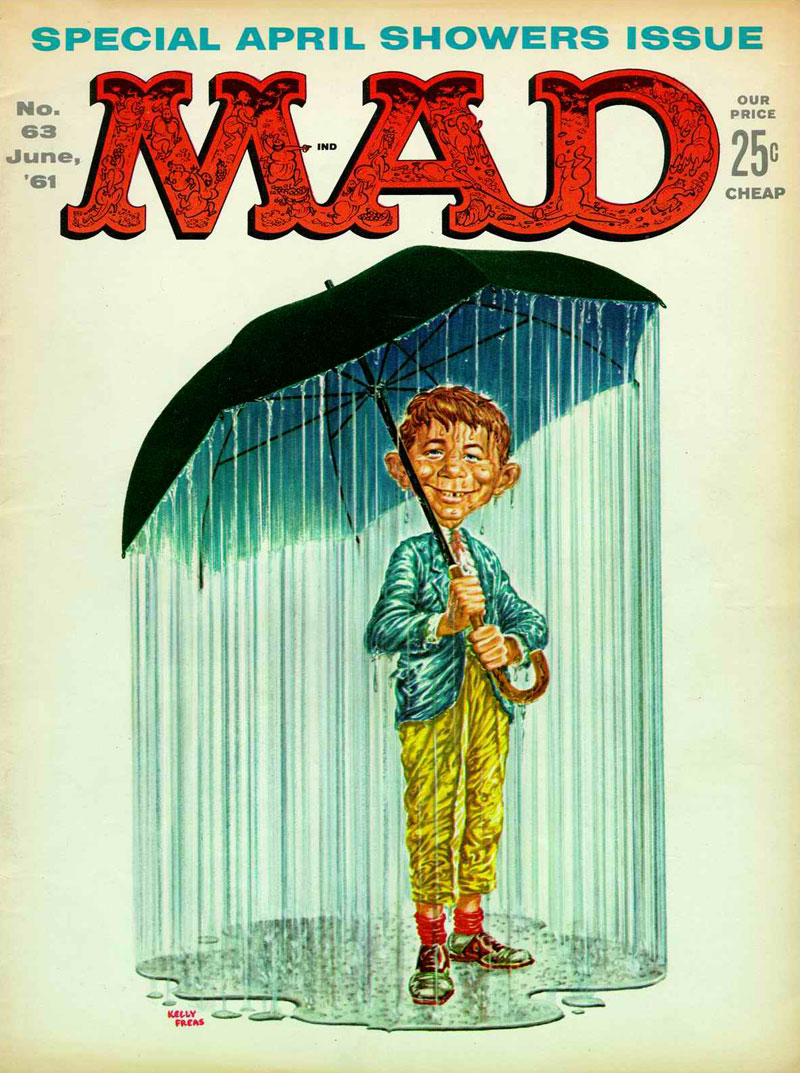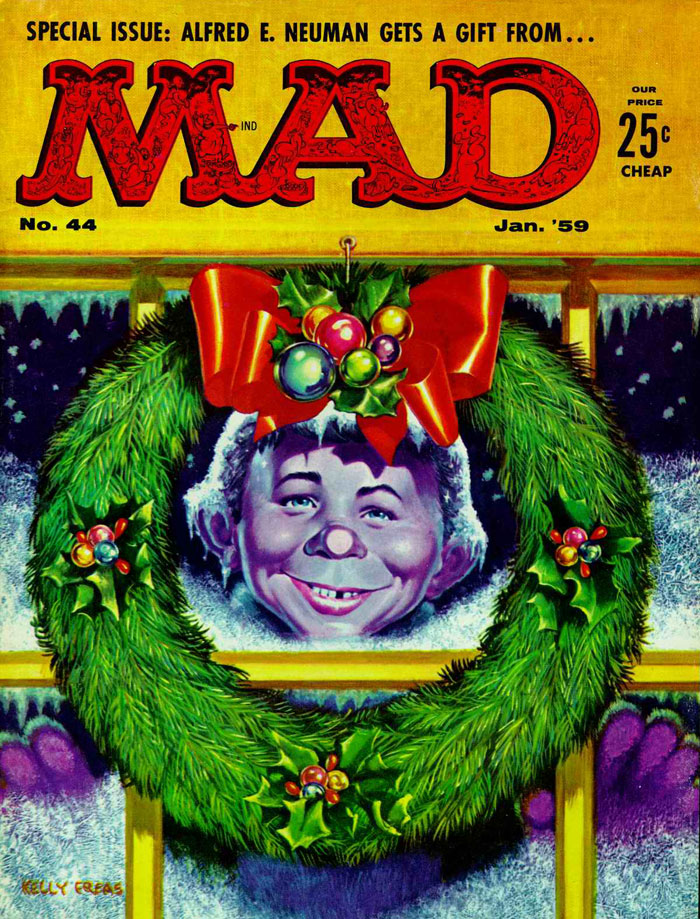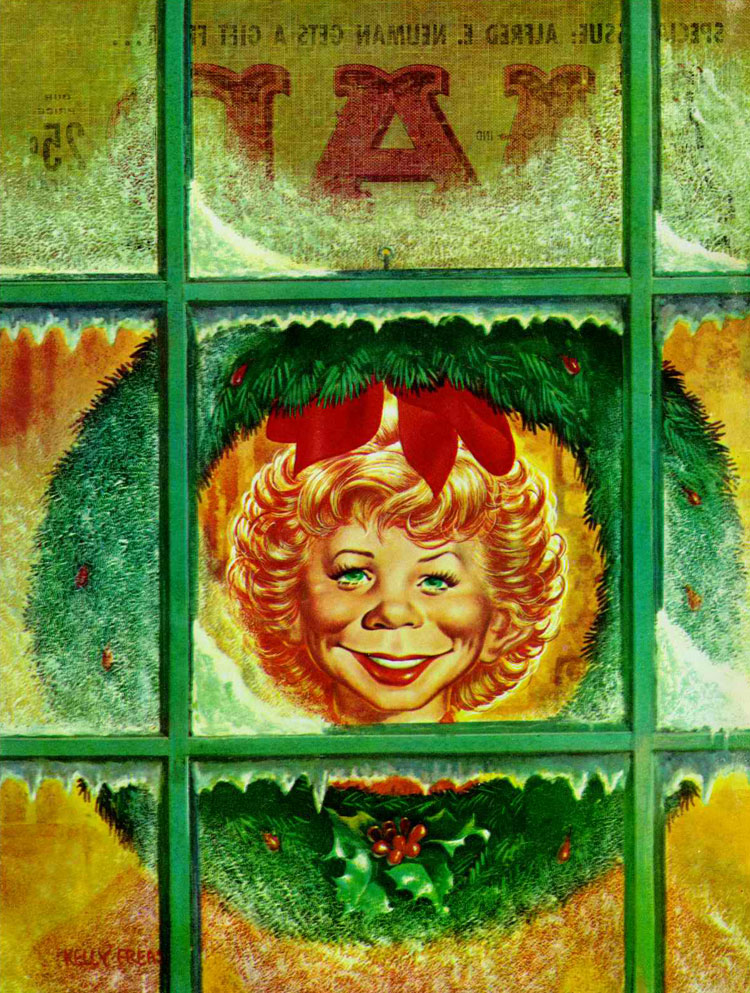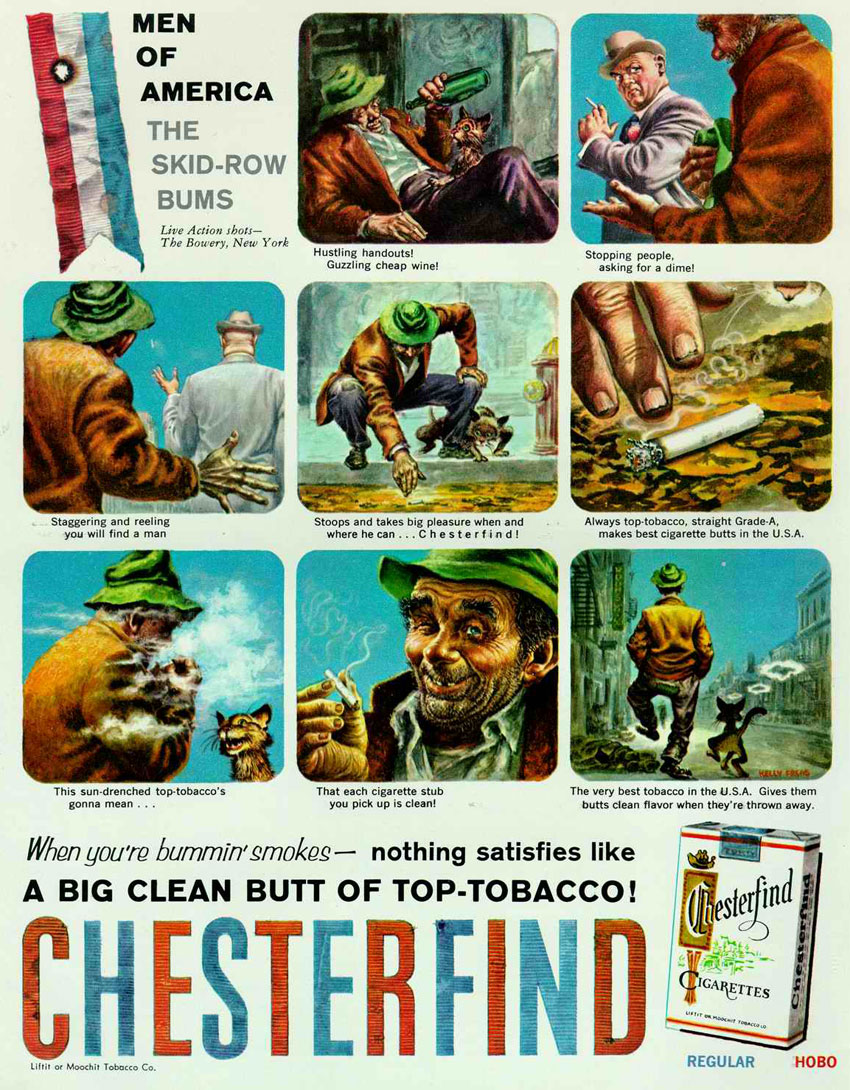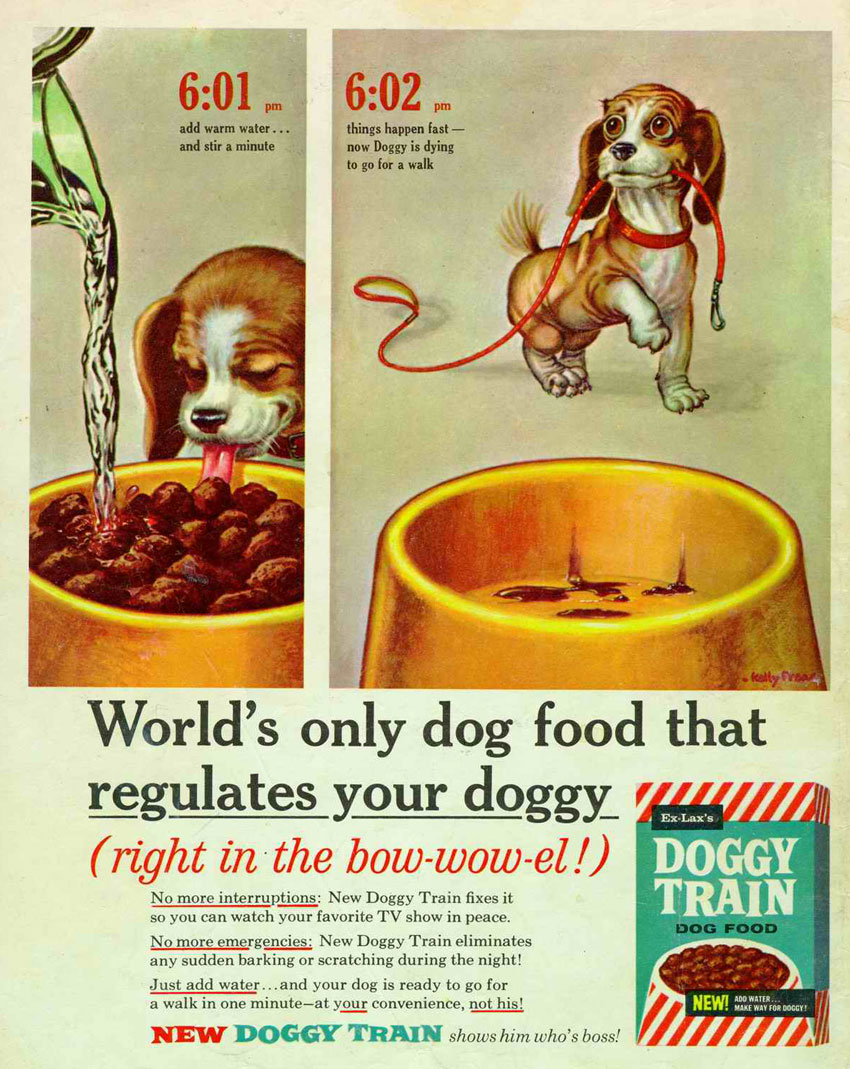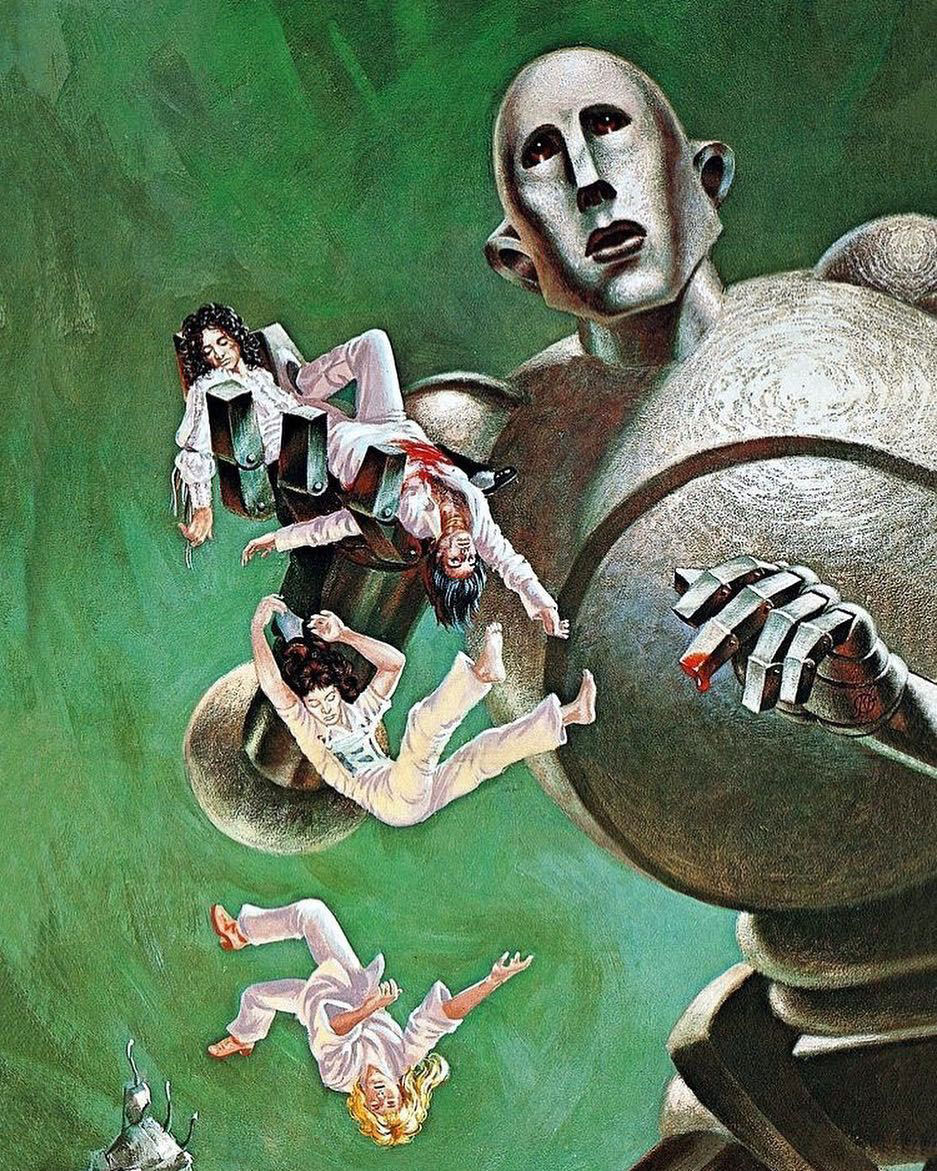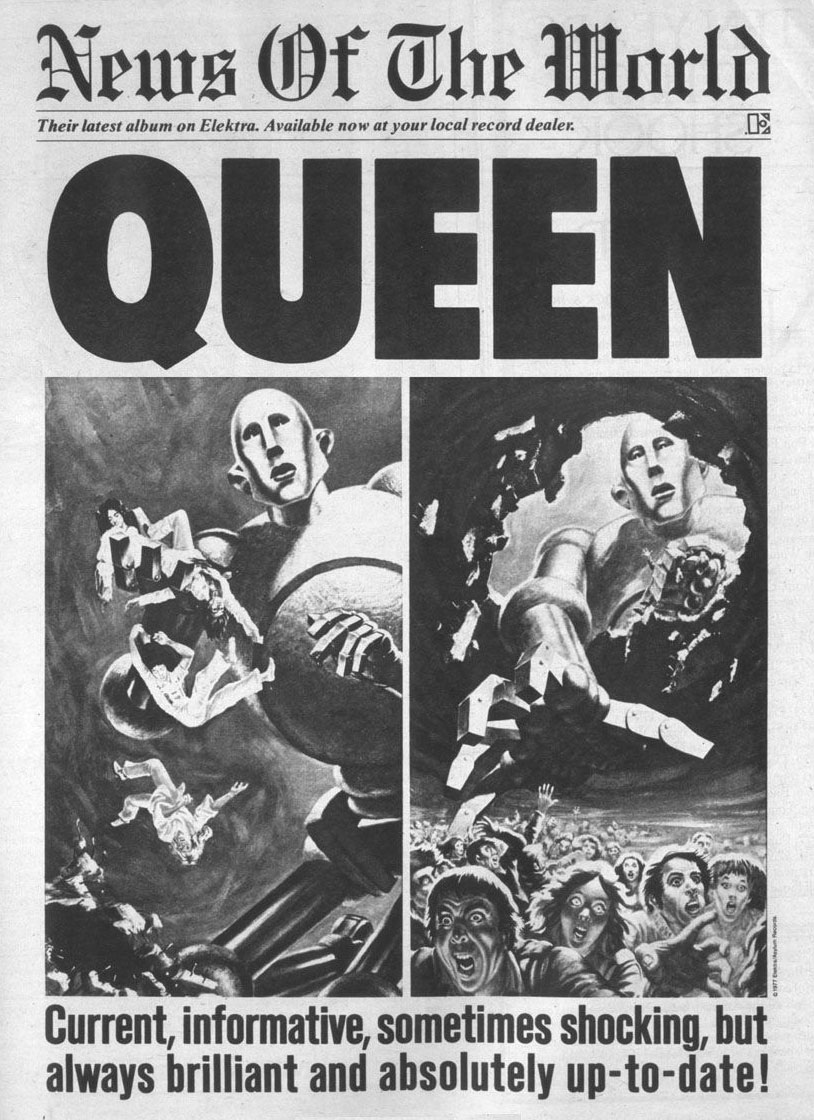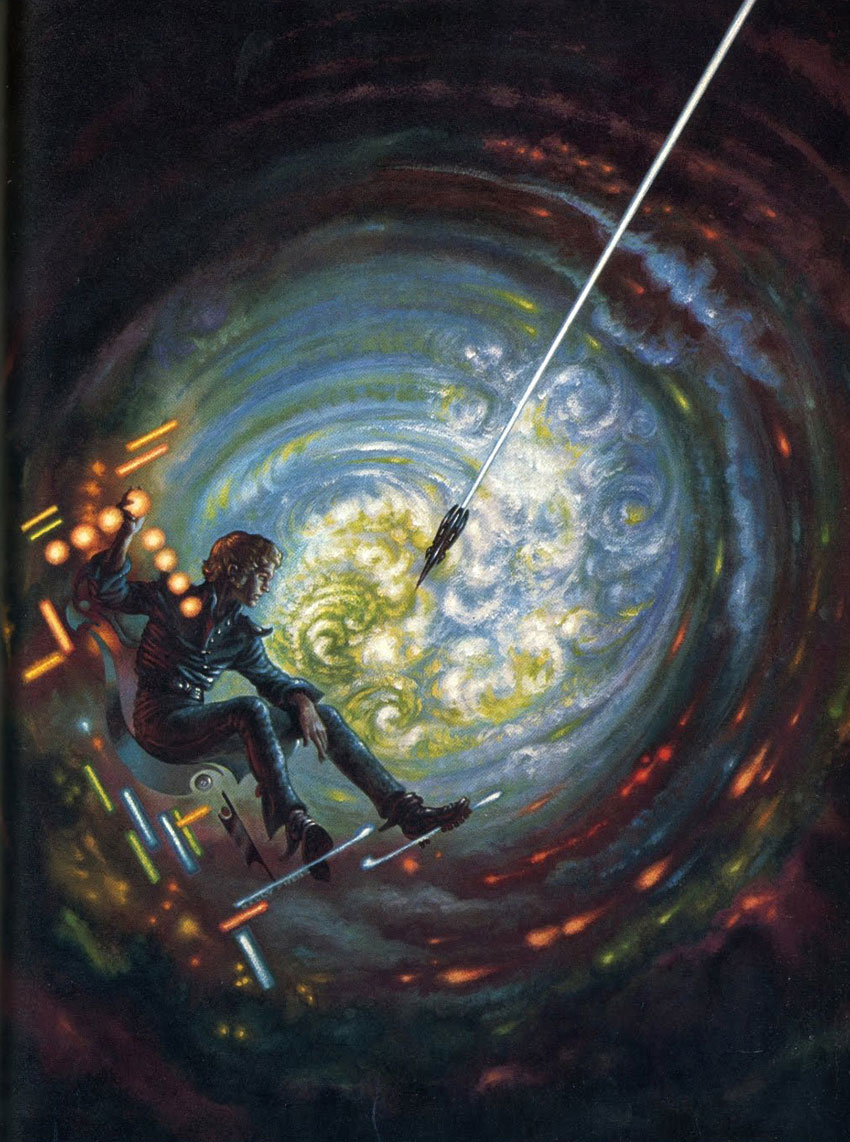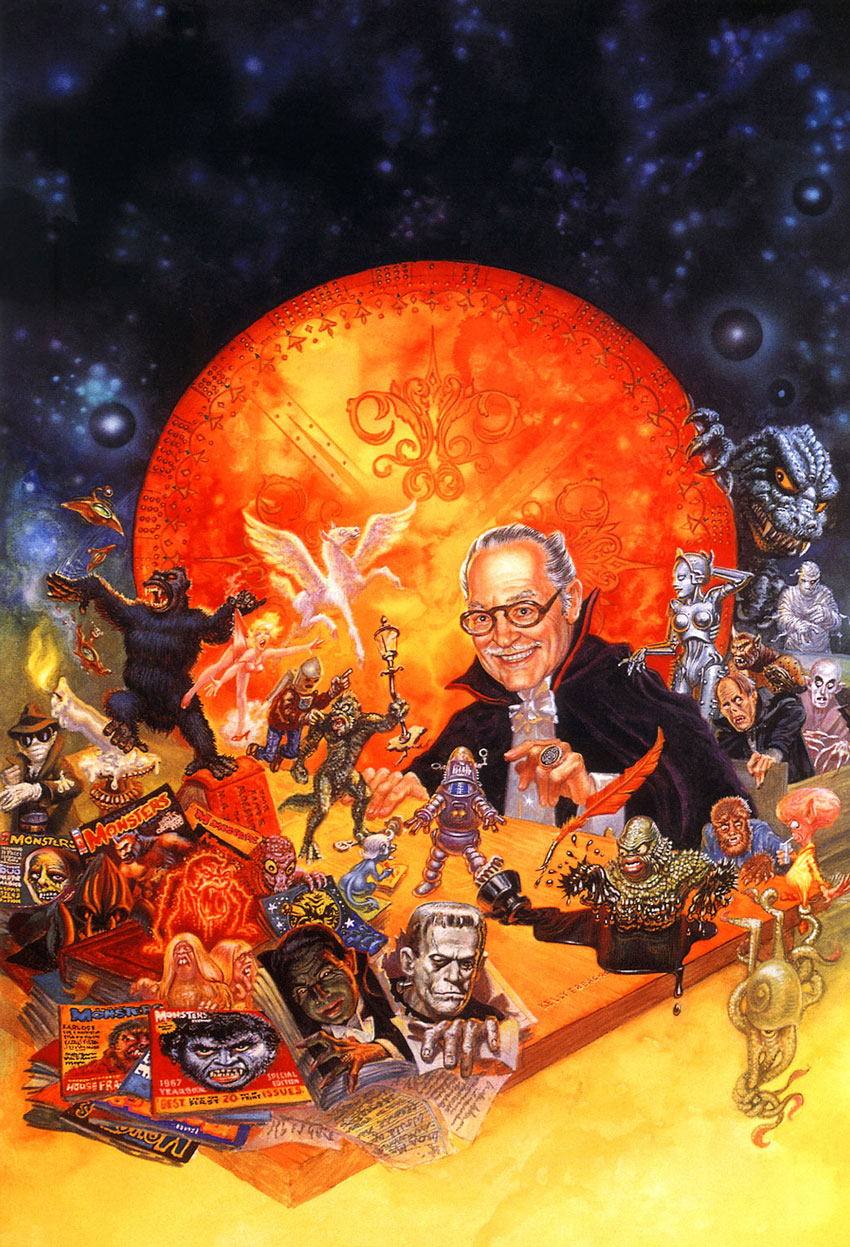'Great Moments in Medicine: Presenting the Bill', Mad Magazine issue #48 (July 1959).
Frank Kelly Freas, Kelly Freas in short, was an American illustrator, best-known for livening up the pages of various fantasy and science fiction novels, short stories and magazines. Admired for his attention to detail, he received the honorary nickname "The Dean of Science Fiction Art". Among rock fans he is most famous for designing the cover of Queen's 1977 album 'News Of The World'. Between 1957 and 1964, Freas was a cover illustrator for Mad Magazine, handling both their regular issues and paperbacks. He was additionally very prominent as one of the magazine's advertisement parodists.
Early life
The artist was born in 1922 in Hornell, New York, as Francis Sylvester Kelly. His parents, Francis Matthew Kelly and Miriam Sylvester, were both photographers and later moved to Canada, where their son was largely raised. Frank's parents eventually divorced, and his mother remarried to Keith L. Freas in 1939, after which he added his stepfather's last name, Freas. In his later professional life, he was generally known as simply "Kelly Freas", giving the impression that Kelly was a given name. However, Freas seems to have been the official family name.
Fresh out of high school, Freas served as an Air Force photographer in the South Pacific during the World War II years. He made himself popular among his fellow recruits by painting sexy women on bomber planes. Subsequently, he briefly worked for the aviation engineering company Curtiss-Wright. Even though from a young age, Kelly Freas had become a major science fiction fan, he considered becoming a doctor or an engineer. In the end, he studied art at the Art Institute of Pittsburgh. Even though he never studied medicine, one of his earliest art jobs was providing anatomical illustrations for anatomy textbooks. During the early 1950s, he was additionally active as an advertising illustrator.
Interior illustration for Planet Stories Vol. 6 #10.
Science fiction and fantasy illustrations
In 1950, when Freas was an art student in Pittsburgh, he painted a picture of the Greek mythological character Pan, dancing in the moonlight, for a classroom assignment. A fellow student suggested sending it to the fantasy magazine Weird Tales, after which it was promptly featured on the cover of their November 1950 issue to promote H. Russell Wakefield's short story 'The Third Shadow'. By 1952 Freas was a full-time science fiction & fantasy illustrator and one of the most demanded in his field. His eye-catching illustrations for covers, articles and short stories ran in publications like Analog Science Fiction and Fact (previously known as Astounding Science Fiction), Fantastic Universe, Magazine of Fantasy & Science Fiction, Planet Stories and Worlds of Science Fiction. He livened up writings by legendary authors like Poul Anderson, Isaac Asimov, Fredric Brown, John Brunner, John W. Campbell, Arthur C. Clarke, Robert A. Heinlein, André Norton, Frederik Pohl and Clifford D. Simak.
Science fiction cover art by Kelly Freas.
Freas additionally made all 58 covers for Harlequin Enterprises' science fiction literature imprint Laser Books, and over 90 for Ace Books. In 1953 he drew cartoons for Bernard Shir-Cliff's book 'The Wild Reader'. He also wrote the foreword to William J. Widder's 'Master Storyteller: An Illustrated Tour of the Fiction of L. Ron Hubbard' (Galaxy Press, 2003).
Freas was known for his detailed and well-researched illustrations. To make his space vehicles as accurate as possible, he visited Cape Kennedy and once spent a week in a nuclear submarine. Contrary to many other fantasy illustrators, he didn't recycle the same faces for his characters, but gave each their own distinguishable, unique and, often grim, look. Yet he always regarded himself as an illustrator rather than an artist. He preferred visualizing other people's written descriptions, instead of making artwork from his own imagination.
Cover art for Mad issues #56 (July 1960) and #63 (June 1961).
Mad Magazine
Between 1957 and 1964, Freas was also a regular contributor to the satirical comic magazine Mad, albeit more as a front and back cover illustrator. Like his predecessor, Norman Mingo, he often portrayed Mad's mascot, Alfred E. Neuman, in realistically-drawn but illogical situations. Several have become classics, frequently reprinted on official Mad merchandising products. Among them Alfred swinging upside down (issue #58, October 1960) or with rain pouring down on him from underneath an umbrella (issue #63, June 1961). Another memorable cover was issue #46 (April 1959), which at first shocked longtime Mad readers, since it shows Alfred announcing "the end of Mad". However, it was April Fool's Day. Underneath this dramatic headline, the full announcement can be read in smaller print, informing the reader that with "the end" they meant "the back cover", adding: "For the beginning of Mad, turn the magazine upside down, stupid!". Freas also received the honor of designing Mad's 10th anniversary issue (issue #72, July 1962), depicting Alfred with a pie smashed on his face.
Front and back cover art for Mad #44 (January 1959).
Two Christmas-themed covers by Freas have frequently been reprinted for special holiday offers. The front cover of issue #44 (January 1959) depicted Alfred standing outside during a cold winter night, staring at a mistletoe hanging inside the living room. The back cover shows the opposite perspective, with a feminine version of Alfred standing inside. For issue #52 (January 1960), Alfred stands among Christmas carol singers with a change dispenser, so listeners can ask for their money back. Since the object is nowadays barely recognizable to younger generations, reprints of the original illustration aren't always depicted in full, but only show the faces of Alfred and the singers.
Between 1959 and 1964, Freas also made covers for various paperbacks compiling Mad articles and comics. From volume #6 through #12, he was the regular illustrator. In 1982, he made one extra paperback cover for volume #59. One of the booklets Frears illustrated, 'Paperback 7: Son of Mad' (1959), can be seen in The Beatles movie 'A Hard Day's Night' (1964), where Victor Spinetti (who plays the Beatles' manager) reads it on the train.
Spoof ad for Chesterfield cigarettes (Mad #41, September 1958).
In addition to covers, Kelly Freas made several advertisement parodies for Mad, spoofing products like Philip Morris cigarettes, Budweiser Beer and Kool-Aid drinks. His best-known spoof appeared on the back of issue #48 (July 1959), ridiculing the pharmaceutical company Parke-Davis. At the time, Parke-Davis printed two series of ads, 'A History of Pharmacy in Pictures' and 'A History of Medicine in Pictures'. Each ad depicted a historical breakthrough in medicinal care, visualized with a color illustration by Robert Thom and a descriptive text underneath. The advertisements were printed in magazines but could also be seen in drugstores and doctor's offices. In Mad's version, the "great moment in medicine" happens every time when the doctor presents his bill, shocking both the patient and his family. The next week, Mad received several letters from offended doctors. Some felt their noble profession was insulted by the insinuation that their bills were deliberately expensive. Others remarked that the doctor in Freas' drawing used a gauge more suitable for aircraft manufacturing. Officially, Freas shrugged it off as a technical mistake, but it did make the drawing even funnier.
Spoof advertisement by Kelly Freas for Mad #72 (July 1962).
In Mad issue #41 (September 1958), Freas drew a comic strip spoofing Chesterfield cigarettes. In sharp contrast with the glamour of the original ads, the parody shows a sleazy tramp asking passersby for a light. After being refused, the beggar picks up a cigarette butt from the street and smokes this one instead. The promo talk nevertheless keeps praising the cigarette's excellence. Another notable sequence by Freas ran on the back cover of issue #72 (July 1962). The first panel shows a dog eating from a bowl. Unbeknownst to the mutt, there are laxatives in the food, making the animal anxious for a walk in the second panel. The sarcastic promo talk promises: "Just add water... and your dog is ready to go for a walk in one minute - at your convenience, not his! New Doggy Train shows him who's boss."
Freas left Mad in 1964 after he was turned down for a raise, but also constantly recycling Alfred E. Neuman's face made him, in his own words, "stale". Switching between his serious-minded SF and fantasy illustrations and then Mad's humorous art was "too difficult to shift his artistic gears", as he recalled, interviewed in Frank Jacobs' 'The Mad World of William M. Gaines' (Bantam, 1972).
'News Of The World' cover art.
Queens's News Of The World
In 1977, Freas was approached by Roger Taylor, drummer with the British rock group Queen, to design the sleeve of their upcoming album 'News of the World' in the vein of a cover illustration he had made for the October 1953 issue for Astounding Science Fiction Magazine. The original cover was an illustration to Tom Godwin's story 'The Gulf Between', depicting a giant robot holding a human corpse in his massive hand. In the context of Godwin's tale, the robot was actually an infant who asks his father to "fix" his accidentally "broken toy". Since Freas only listened to classical music, he wasn't familiar with Queen and feared he might hate their sound. Out of precaution, he made the illustration first and only listened to their music afterwards. Luckily, their bombastic, sometimes operatic songs appealed to him.
Freas reused the same giant robot from his magazine illustration, only with Queen's band members as the corpses. Inside the sleeve, the colossal robot breaks through a building, terrorizing citizens. During Queen's 1977-1978 'News Of The World' tour, Freas' artwork was used on official tickets, posters and other merchandising. Record label EMI made a few small-sized robot sculptures to be put on display in various record stores. During Queen's concerts themselves, a giant robot was used as a special effect. As a tribute to Freas, it was named "Frank".
'News Of The World' became a global bestseller, partially thanks to the lead singles 'We Will Rock You' and 'We Are The Champions', which are still sports stadium anthems to this day. Tom King spoofed this particular album sleeve in the opening panel of the comic 'Bender Breaks Out' from Futurama Comics issue #20 (2005), featuring characters from Matt Groening's 'Futurama'. The robot from 'News Of The World' was also referenced in the episode 'Killer Queen' (2012) of Seth MacFarlane's animated series 'Family Guy', in which baby Stewie is terrified by the giant. For MacFarlane, this joke was autobiographical. As a child, the cover of 'News Of The World' disturbed him. Comic artist Mike del Mondo also parodied the album cover too on the front image of 'X-Men: Gold 11' (Marvel Comics, 2017).
Promotion for Queen's 'News Of The World' album, showing Kelly Freas' outer and inner sleeve illustrations as a sequence.
Other works
Kelly Freas made several posters for the National Aeronautics and Space Administration (NASA), which are nowadays in the collection of the Smithsonian Institution. In 1973, he designed the shoulder patch for the astronauts of Skylab 1. For a Franciscan Order, he made over 400 portraits of Franciscan saints, collected in the book 'Franciscan Book of Saints' (1959).
Recognition
Frank Kelly Freas won a record-breaking 11 Hugo Awards from the World Science Fiction Society for "Best Artist". He received the awards in 1955, 1956, 1958, 1959, 1970, 1972, 1973, 1974, 1975 and 1976. It got to the point that he asked the Hugo committee to no longer nominate him, so other artists could have a chance. This didn't stop them from giving him a special 2001 Hugo for his entire career. Between 1972 and 1975, he was a four-time winner of the Locus Award for "Best Artist". Freas also won three Chesley Awards, namely for "Best Cover Illustration" (1989) and twice for "Artistic Achievement" (1994, 2001). His trophy library was additionally adorned by a Frank R. Paul Award (1977), Inkpot Award (1979), Edward E. Smith Memorial Award for Imaginative Fiction (1981), Rova Award (1981), Lensman Award (1982), Phoenix Award (1982), Los Angeles Science Fiction Society Service Award (1982), Neographics Award (1985), Daedalus Life Achievement Award (1987), Art Teacher Emeritus Award (1988) and "Best Professional" in the "Media" category at the International Fantasy Expo (1989).
Illustration for 'The Second Kind of Loneliness' by George R.R. Martin.
In 1991, Kelly Freas was inducted in the National Association of Trade and Technical Schools National Hall of Fame, while the International Association of Astronomical Artists elected him as a fellow in 2000. Three years later, in 2003, the Art Institute of Pittsburgh awarded him a doctor of arts degree. In 2006 he became only the second artist, after Chesley Bonestell, to be inducted into the Science Fiction Hall of Fame.
A fantasy illustration by Kelly Freas depicting a werewolf was shown in a classroom scene of the film 'Harry Potter and the Prisoner of Azkaban' (2003). Hollywood director Steven Spielberg bought the original artwork of the 'More Trash from Mad' paperback cover and keeps it locked in a safe.
Death
On 2 January 2005, coincidentally on National Science Fiction Day, Frank Kelly Freas died at age 82 in his home in West Hills, Los Angeles, California.
Secondary literature
For those interested in his life and career, the books 'Frank Kelly Freas: The Art of Science Fiction' (Donning, 1977), 'Frank Kelly Freas: A Separate Star' (Greenswamp, 1985) and 'Kelly Freas: As He Sees It' (Sterling, 2000) are highly recommended.
Self-portrait from 'Famous Monsters of Filmland'. The artist is surrounded by iconic movie monsters. From left to right: The Invisible Man, the flying saucers from 'War of the Worlds', King Kong, the monster from '20 Million Miles to Earth', Robby the Robot (from 'Forbidden Planet'), The Creature From The Black Lagoon and the Wolfman. Behind Freas, is the female robot from 'Metropolis', the Cyclops from 'The Seventh Voyage Of Sindbad', The Phantom of the Opera, Nosferatu, Godzilla and the Mummy. Between the books on the table, we spot the fanged monster from 'It Conquered the World', the light-reflecting creature from 'Forbidden Planet', a Mole Man (from 'The Mole People'), the Morlocks (from 'The Time Machine'), Dracula and Frankenstein's Monster.


